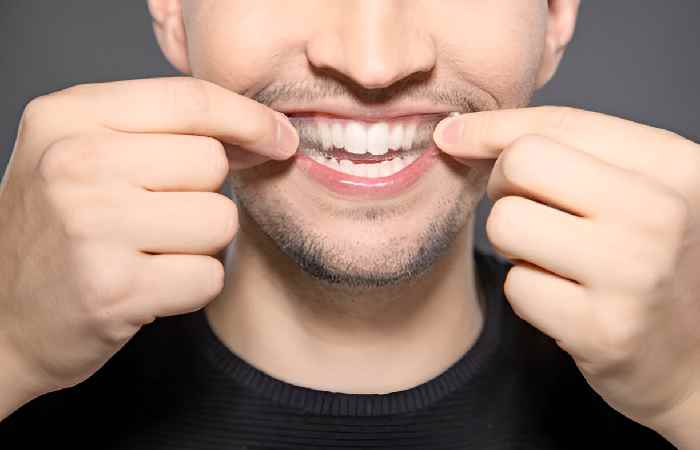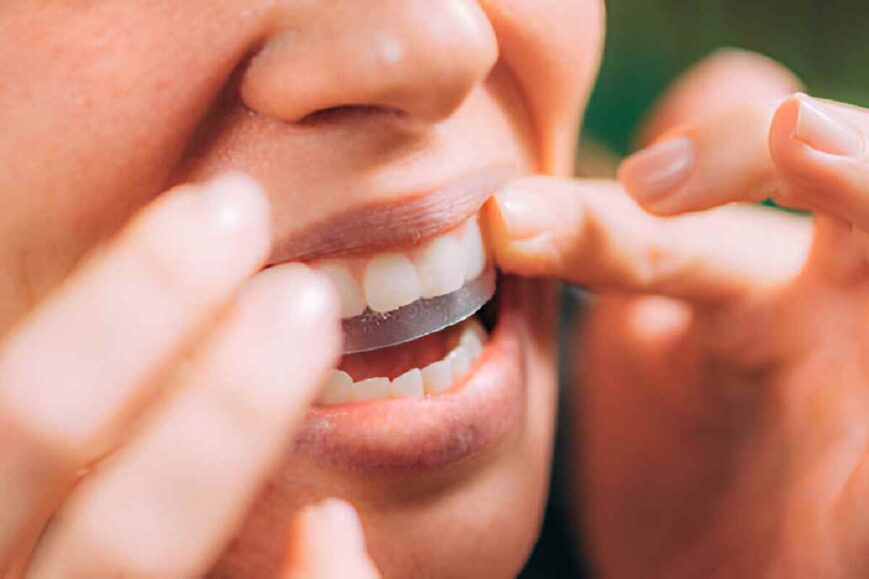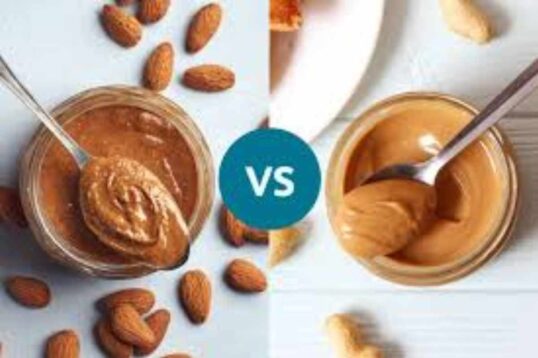Do Whitening Strips Work? – Hi everyone, how are you? I hope you all are fine. Do you want to know about whitening strips and how they work? Then this is the right article for you as we will provide detailed information about the whitening strips. Let’s begin with the introduction of the whitening strips.
When you visit a local medical store you may have noticed numerous products claiming to whiten your teeth, the teeth whitening strips are one of these products that assure you to whiten your teeth. The whitening strips were first introduced in the 1980s Trusted sources but are now available everywhere. Let’s learn about the teeth whitening strips elaborately and how they work.
Teeth Whitening Strips

Although dentists offer teeth whitening services most people prefer teeth whitening strips as they are cheap and can be applied at home when compared to the expensive whitening treatments at the dental clinics or the dental hospitals.
Teeth whitening strips are made out of polyethylene, which is a thin, elastic type of plastic This plastic is coated with peroxide or bleach
How do teeth whitening strips work?
Most of the teeth whitening strips are made of polyethylene which is coated with peroxide or bleach. This bleach works the same way as the bleach whitens the clothes. When you apply these strips on your teeth as directed by the package, this bleach comes in contact with the tooth enamel thus allowing the peroxide to discolor or remove the stain from the surface of your teeth, thus making the teeth whiter.
Teeth whitening strips can lighten your teeth a shade or two. It may only take several days after treatment. Home teeth whitening products are best for mild discoloration.
But home products aren’t usually as effective as in-office dental whitening techniques. They also come with some risks such as increased tooth sensitivity and gum irritation.
Teeth whitening strips can whiten your teeth by bleaching stains with hydrogen peroxide or carbamide peroxide. Carbamide peroxide is a molecule that breaks down into hydrogen peroxide when it comes into contact with water.
Peroxides in whitening strips penetrate the outer layer of your tooth called the enamel and enter the deeper dentin layer, where they bleach chromogens. Chromogens are pigmented molecules found inside and outside your tooth that cause staining.
Staining is of two categories: extrinsic and intrinsic staining.
Extrinsic staining
Extrinsic staining affects the outside of your tooth and is mostly caused by environmental factors. These environmental factors are as follows
- Smoking:
- Certain foods and drinks such as coffee, wine, dark berries
- Antibiotics
- Exposure to metals such as iron or copper
Intrinsic staining
Intrinsic staining affects the inside of your tooth. It’s caused by factors such as:
- Age-related enamel erosion
- Genetics
- Antibiotics
- Exposure to high levels of fluoride
- Tooth development disorders
Whitening strips effectively work on both extrinsic and intrinsic stains
Whitening strips can target both types of stains. Stains caused by aging, genetics, smoking, or coffee are generally the fastest to respond to bleaching Trusted Source. Yellowish aging stains also respond well.
Whitening strips may be best used when you’re trying to make a small touch-up to your tooth color.
For more significant changes, you may want to consider professional whitening from a dentist. A dentist can use stronger bleaches and give you a custom treatment appropriate to your needs.
Ingredients
Home whitening strips generally contain hydrogen peroxide or carbamide peroxide to bleach stains in your teeth. However, some strips, especially those used at some beauty salons or cruise shipsTrusted Source, may contain chlorine dioxide.
Chlorine dioxide is touted to be a safer and more effective alternative, but its safety is debated. Chlorine dioxide may strip your tooth enamel. It may also make your teeth more prone to restaining and becoming extremely sensitive.
Harmful effects of Teeth whitening strips
- Teeth whitening strips can lead to high tooth sensitivity and gum irritation. Usually, these symptoms are mild.
- Tooth sensitivity usually starts when the treatment begins and lasts for several days. Gum irritation may start within a day of treatment and also typically lasts for several days.
- Your risk of developing these side effects increases with the concentration of peroxide in the whitener and the amount of time you leave them on.
- Using high concentrations of hydrogen peroxide can potentially damage the structure of your teeth and make your teeth more susceptible to demineralization. Demineralization is the loss of calcium and other minerals from your teeth.
- StudiesTrusted Source has reported structural damage to the enamel from the application of 35 percent carbamine peroxide.
- Also, remember that teeth whitening won’t change the color of existing fillings, crowns, bridges, or implants. Only natural teeth can be whitened.
Tips for keeping teeth white
Following good oral hygiene habits and minimizing your consumption of certain foods can help you avoid staining and maximize your tooth health.
Here are some specific ways to keep your teeth white.
Below are some of the White teeth maintenance tips. Continue reading to know about them.
- Restrict consumption of staining foods: Some foods and drinks such as coffee, red wine, dark berries, and sodas are notorious for staining teeth.
- Use a straw: When consuming beverages that have the potential to stain, a straw can help avoid the beverage’s direct contact with your teeth.
- Brush your teeth. Brushing your teeth shortly after consuming a staining food or drink can help limit their effect.
- Follow good dental hygiene habits. Following good overall dental hygiene habits such as brushing your teeth twice a day and flossing can help you avoid tooth decay and other issues that may cause discoloration.
- Eat plenty of calcium. Eating plenty of calcium can help you keep your teeth strong and reduce your chances of developing cavities.
- Limit your sugar intake. Harmful bacteria in your body produce acid when they encounter sugar. This acid breaks down your teeth and can lead to tooth decay.
- Avoid smoking and other forms of tobacco use. Nicotine found in tobacco products can give your teeth a yellowish stain. After chronic use, your teeth may begin to look brown.
- Use whitening products as a touch-up treatment. You shouldn’t solely rely on whitening products to keep your teeth white. But they can be used to touch up mild discoloration.
Conclusion – Do Whitening Strips Work?
Teeth whitening strips can effectively whiten your teeth by a shade or two and you can see the results several days after the treatment. But before using any teeth whitening product, talk with your dentist and check to see if the product has the American Dental Association (ADA) Seal of Acceptance then you can proceed to buy one. We hope the information provided by us is useful to you. Please share your thoughts in the comment section given below.


